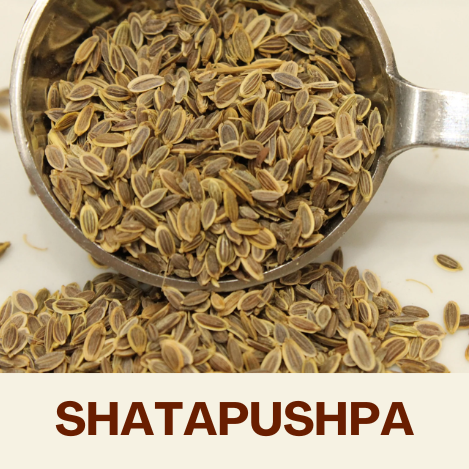For order and delivery updates
For order and delivery updates


Nature has given us an array of Ayurvedic plants, herbs, and botanical wonders that offer a treasure trove of health benefits. Among these, Shatapushpa, scientifically known as Anethum Sowa or Peucedanum gravelons, stands out as a versatile and remarkable herb renowned for its aromatic and therapeutic properties. It is commonly known as Indian Dill or Sowa and has been used in Indian cuisine and Ayurvedic medicines for centuries. It not only has a rich history but also a range of health benefits. In this blog, we will discuss its traditional uses, health benefits, and modern applications that enhance our well-being.
Shatapushpa is derived from two Sanskrit words, namely "Shata,” which means hundred, and "Pushpa,” which means flower. As the name suggests, it has tiny yellow flowers that bloom on its delicate, feathery bushes. It is native to India and belongs to the Apiaceae family.
The main role of this Shatapushpa herb in the culinary world is to impart flavor to dishes, making it a staple. This has been used in various cuisines, particularly in India. The leaves and seeds of Shatapushpa are both edible and used in different ways.
Leaves: These leaves are often used for garnishing, adding freshness and aroma to salads, soups, and curries. They add an extra burst of flavor and fragrance by enhancing the overall culinary experience. These leaves are also used to treat urinary tract infections.
Seeds: These seeds are small, oval, and brown in color with a fragrant flavor. Compared to its leaves, these seeds are strong, slightly sweet, and tangy in flavor. These seeds are used as a spice in a variety of meals, including rice, bread, pickles, and spice blends. These seeds are the major ingredients in various traditional Bengali cuisines.
Beyond its culinary applications, Shatapushpa has long been renowned for its medicinal properties in Ayurveda. Here are some of the medicinal benefits of this herb:
It is available in various forms, including capsules or supplements, extracts, spice blends, and infused oils. Here are some modern applications of Shatapushpa:
Even though it offers numerous benefits, it is essential to consult an Ayurvedic doctor before including it in your diet, especially if you are pregnant, nursing, or have underlying health conditions. Like any herb or spice, it's important to be aware of any potential allergies or adverse reactions.
Shatapushpa, with its culinary uses and wide-ranging benefits, is a revered herb in Ayurveda. Whether you're looking to enhance your culinary creations or improve your gut health, simply add its aromatic essence to your diet.

Tools and strategies modern teams need to help their companies grow.
Knee pain can be more than just an inconvenience; it can interfere with daily activities, making even simple tasks like…
Struggling with knee pain that won’t go away? Whether it’s due to aging, arthritis, or an old injury, persistent knee…
Knee pain is a widespread concern, affecting people of all ages due to factors such as aging, arthritis, injuries, or…




Upload your prescription here, and our team will review it and contact you shortly to process your order.
Submitted successfully.
Our team will get in touch with you soon to process your order.
Select Language
